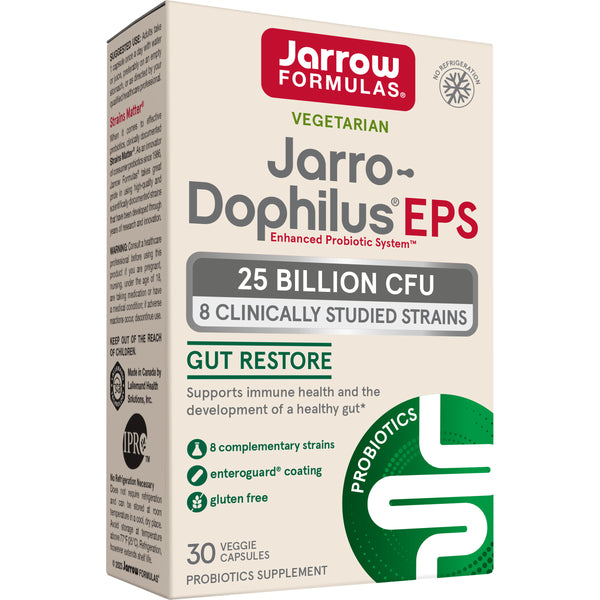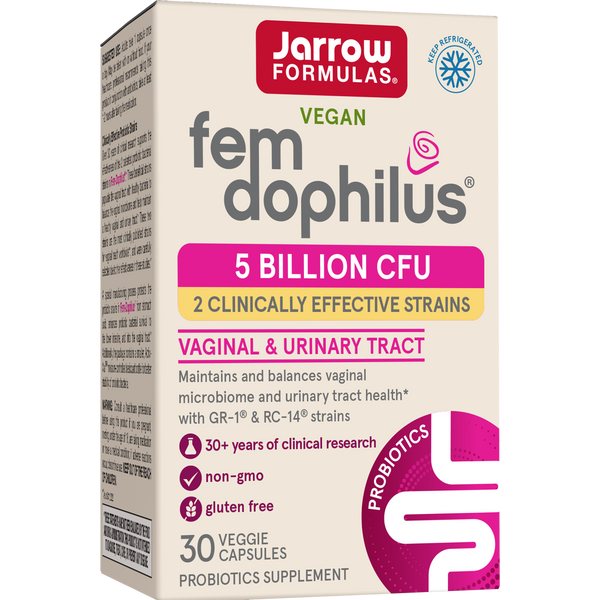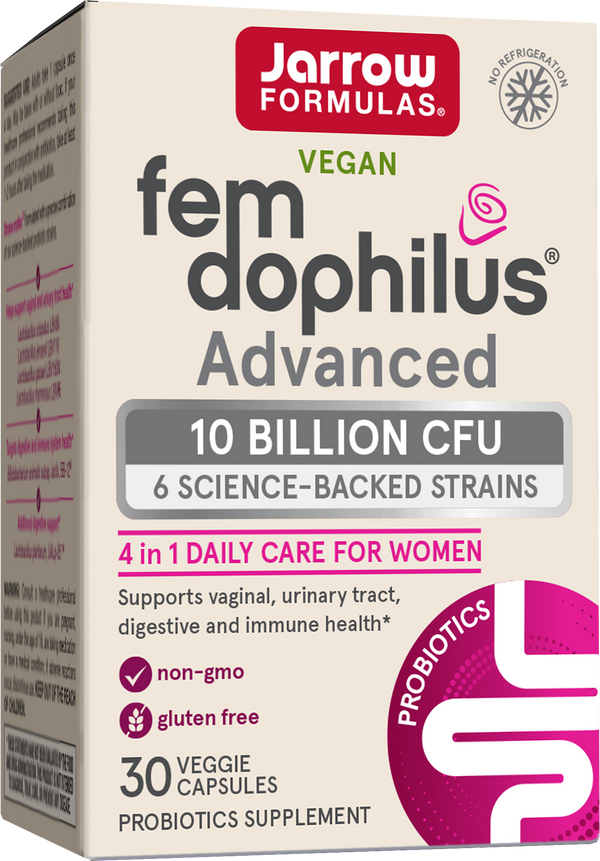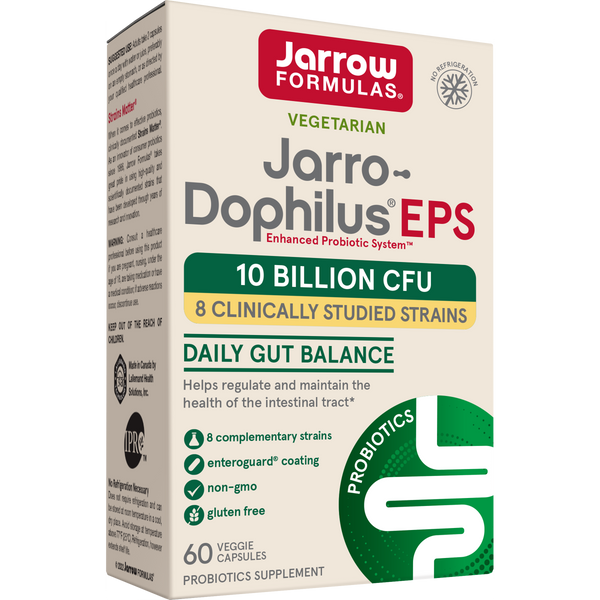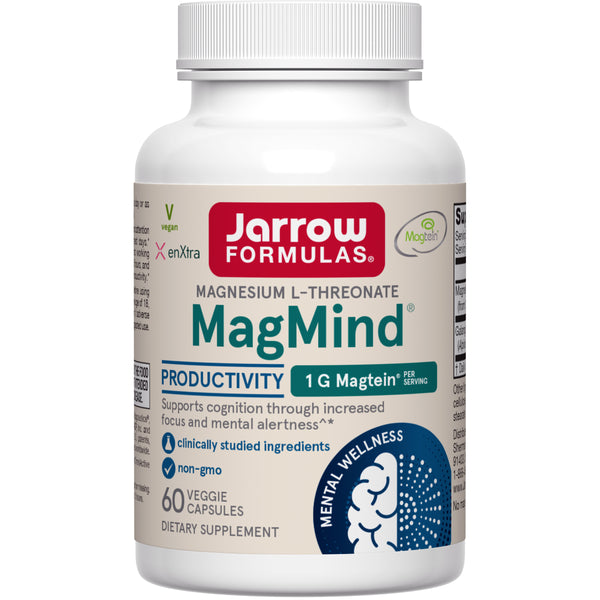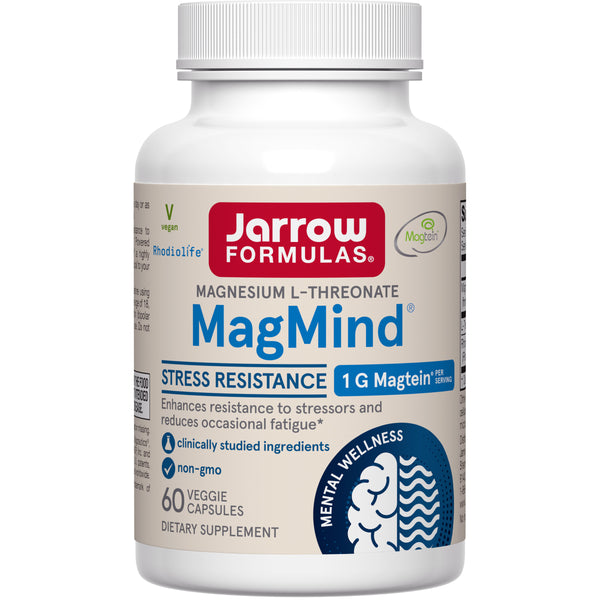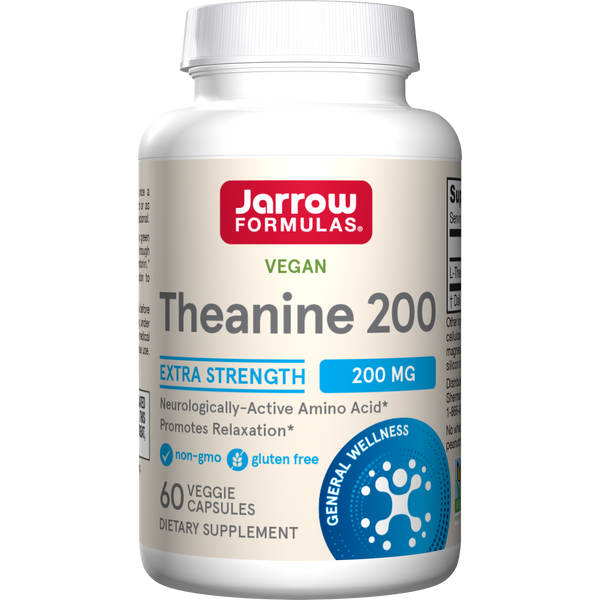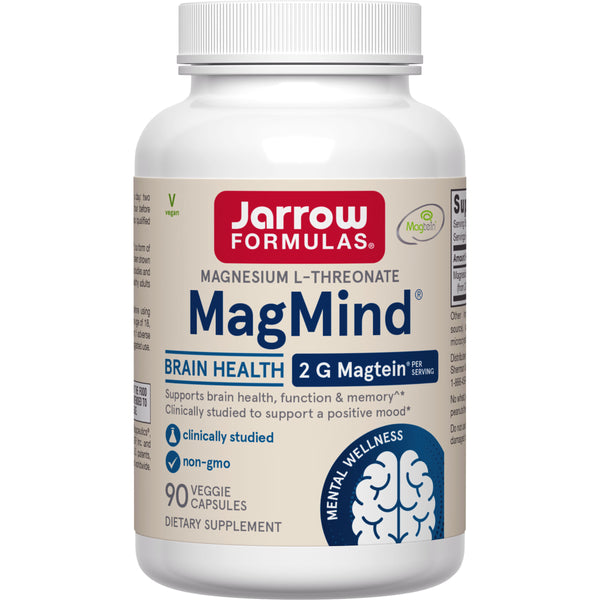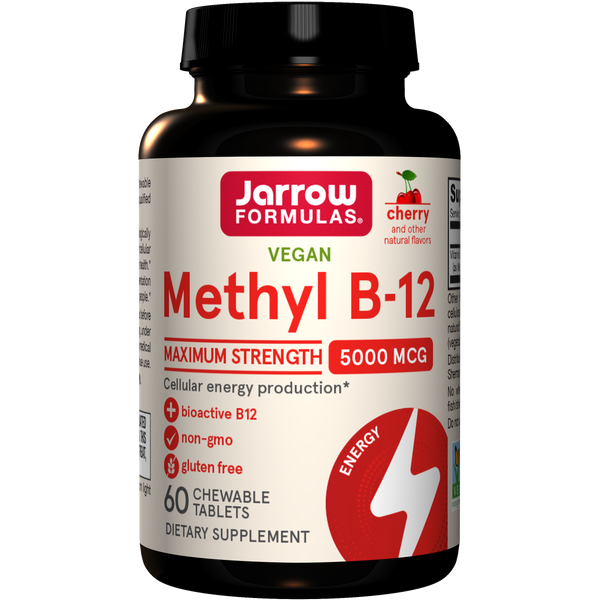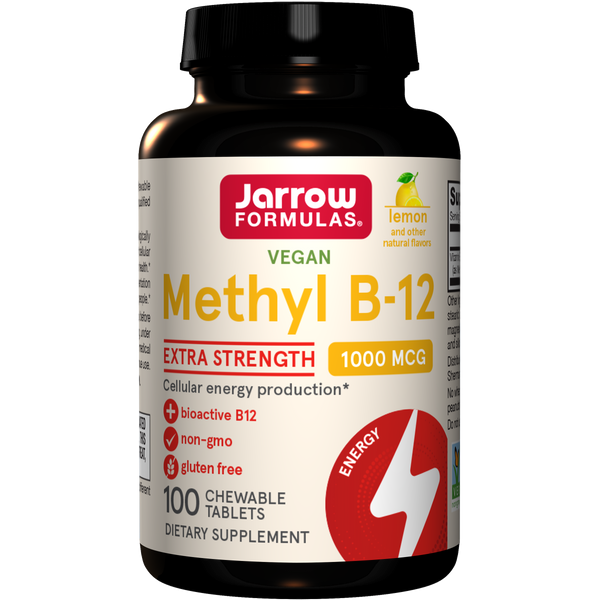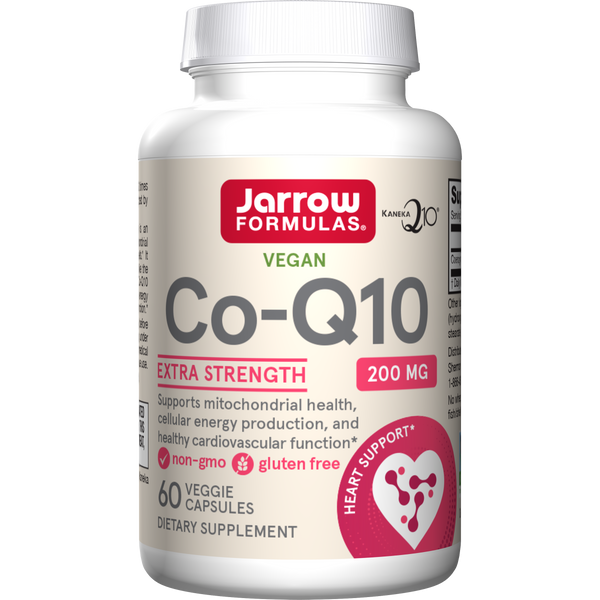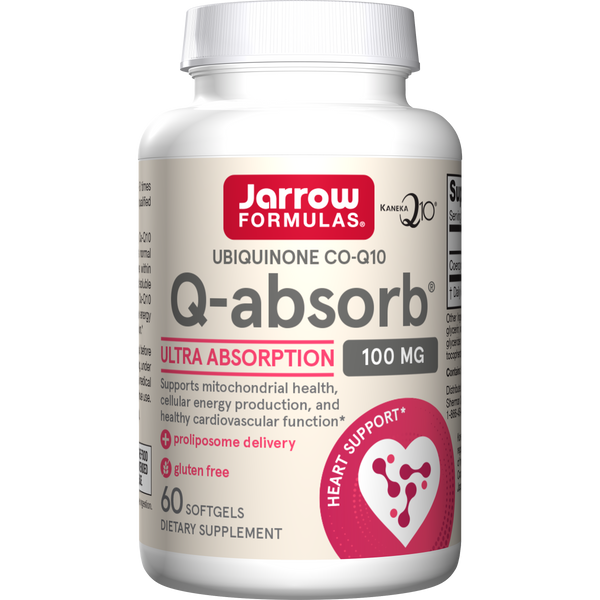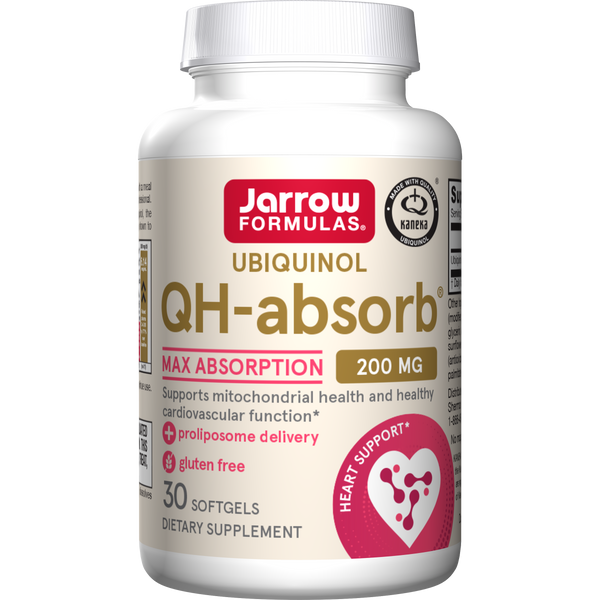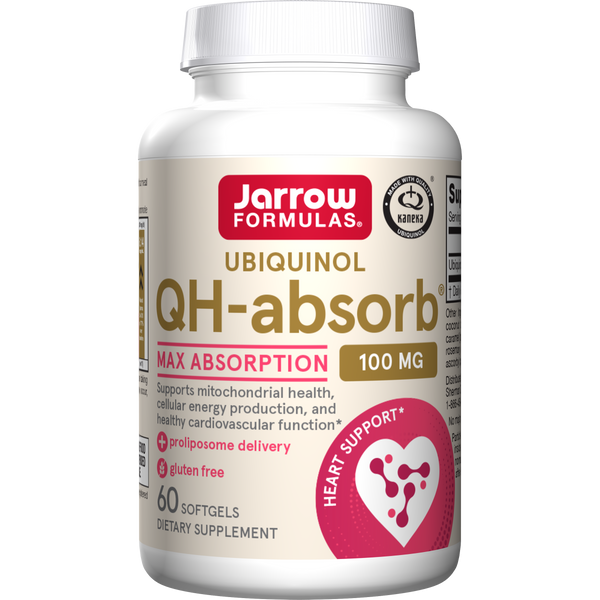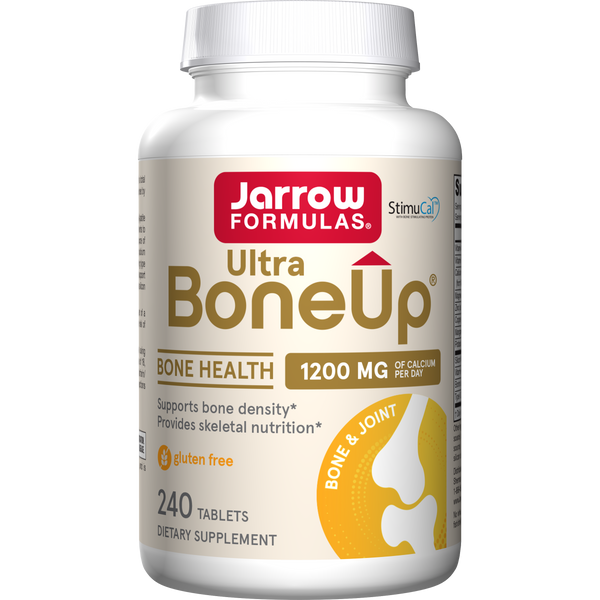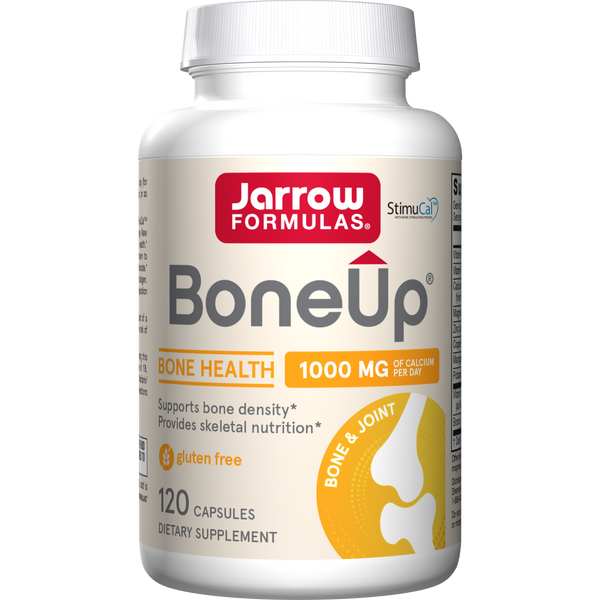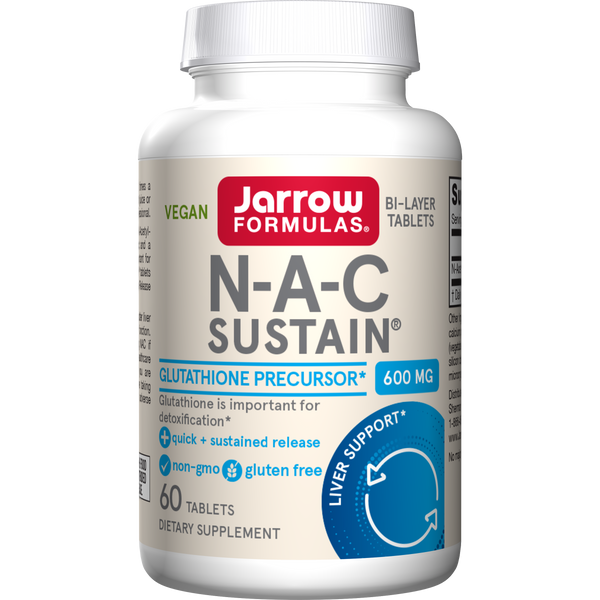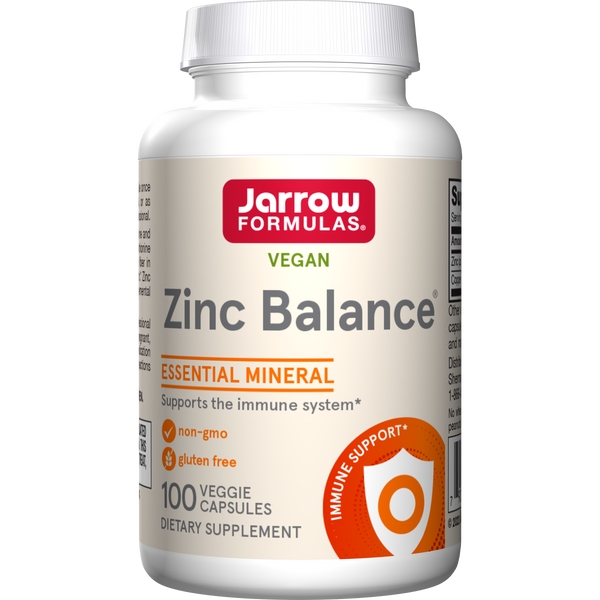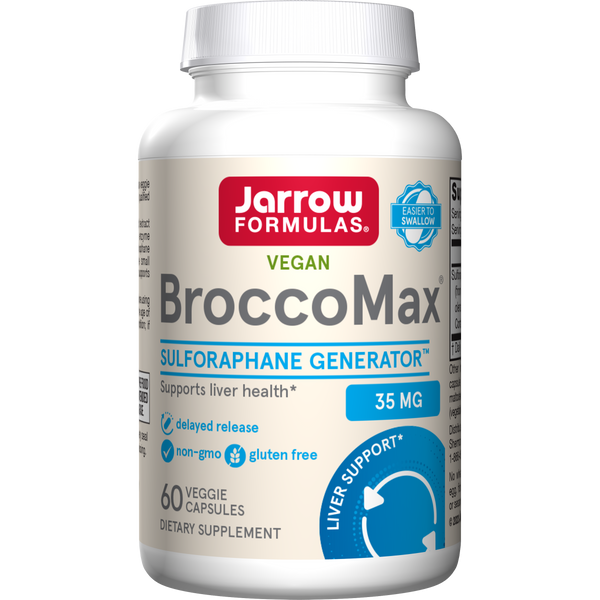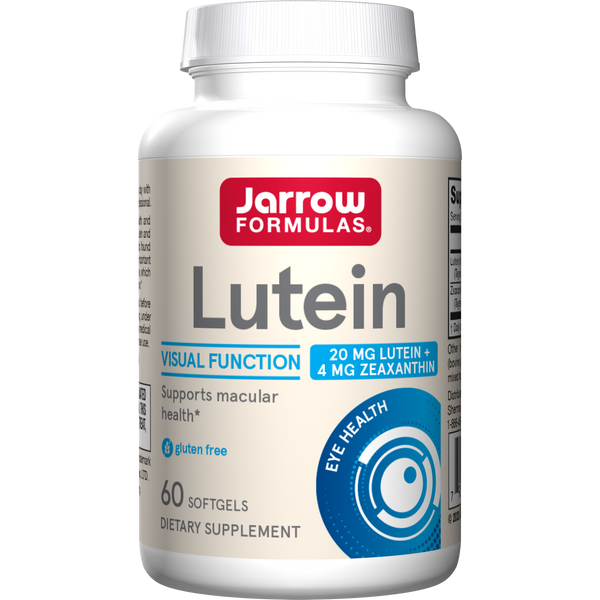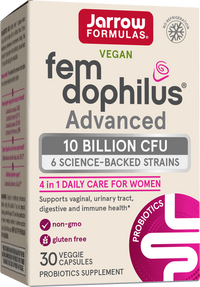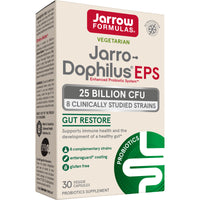Probiotics: The Foundation for Total Well Being
Lactic Acid Bacteria (LAB): Historical background
Lactic acid bacteria (LAB), including species of Lactobacillus, Streptococcus, Pediococcus and Leuconostoc have been used for preservation of food by fermentation for thousands of years. People of Eastern Europe, Southern Asia and Northern Africa have consumed yogurt and kefir for thousands of years. Fermentation of milk by LAB has permitted its preservation, improved its palatability and digestibility. Ancient people regarded these fermented milks as divine foods and as indispensable remedies for various illnesses.
Fermentation of food provides characteristic taste profiles and lowers the pH, which prevents contamination by potential pathogens. Fermentation is globally applied in the preservation of a range of raw agricultural materials (cereals, roots, tubers, fruit and vegetables, milk, meat, fish etc.).
L. plantarum frequently occurs spontaneously, in high numbers, in most lactic acid fermented foods of plant origin, for example, in brined olives, capers, and sauerkraut. Thus, humans have in this way consumed large numbers of live LAB, and presumably those associated with plant material were consumed before those associated with milk based foods.
A century ago, Elie Metchnikoff (Russian scientist, Nobel laureate, and professor at the Pasteur Institute in Paris) postulated that LAB offered health benefits leading to longevity. He considered yogurt to be one of the most effective means of inhibiting intestinal infections, intoxications and putrefactions, which he thought were the cause of a great number of conditions such as premature senility and lack of vitality.
Probiotics: Definition
The term probiotics was first introduced in 1965 by Lilly and Stillwell; in contrast to antibiotics, probiotics were defined as microbially derived factors that stimulate the growth of other organisms. In 1989, Roy Fuller emphasized the requirement of viability, for probiotics, and introduced the idea that they have a beneficial effect on the host.
The World Health Organization has defined probiotic bacteria as live microorganisms which when administrated in adequate amounts confer a health benefit on the host (FAO/WHO 2001).
According to the current definition, a fermented food is not a probiotic. A fermented food might contain a probiotic if the strain/strains in question satisfy the criteria. Fermented foods contain live, active cultures, but these cultures are generally tested for food fermentation properties and not health benefits.
In spite of the existing scientific consensus, there is no legal definition of the term probiotic.
The minimum criteria to be met for probiotic products are that the probiotic must be:
Yogurt is perhaps the most common probiotic-carrying food, but the functional food market has expanded beyond yogurt. Cheese, fermented and unfermented milks, juices, smoothies, cereal, nutrition bars, and infant/toddler formula all are food veÂhicles for probiotic delivery. In addition to being sold as foods, probiotics are sold as dietary supplements in the form of capsules, tablets, and powders.
Key Species Studied and Used as Probiotics
Lactobacillus Genus Species
The gastro-intestinal tract, including the vagina, contains a very complex and diverse microbiota or microbial ecosystem - 100,000 billion bacteria (100 bill/g content), located mainly in the colon and comprising over 1000 species of microorganisms. Bacterial cells outnumber the host cells by a factor of 10.
Although much is still unknown about the microorganisms that colonize humans, some important points can be made.
Activities such as regulating immune function, enhancing the intestinal barrier to prevent unwanted microbes from entering the blood stream, colonization resistance, and digestion are important functions of colonizing microbes.
At birth, the intestinal immune system is virtually non-existent and develops at the same time as the intestinal microbiota. It becomes more and more complex as dietary intake changes from breast and/or bottle feeding to adult type food intake. Following birth, colonization facilitates the formation of physical and immunological barrier. The Host-Microbe interaction is of primary importance during the neonatal period. Around the age of 2, intestinal immune system is considered to be mature.
It is possible that the microbiota acquired during and immediately after birth is necessary for the newborn's systemic and mucosal immunity, and it may also be responsible for controlling inflammatory responses in allergic and inflammatory bowel diseases.
The intestine is the body's most important immune function related organ: approximately 70 % of the body's immune cells are located in the intestinal mucosa/lining of the GI tract. The immune system controls immune responses towards:
Probiotics produce organic acids that are reported to inhibit E. coli and other intestinal pathogens. The most common are lactic, acetic and formic acids, which lower intestinal pH and may suppress harmful organisms. Acetic acid also lowers the O/R (oxidation-reduction) potential. Simplified, if the O/R potential is reduced, organisms that require oxygen for growth, such as Salmonella and Shigella, will be inhibited.
Many researchers report that certain strains of lactic acid bacteria produce bacteriocins, antibiotic-like molecules and other compounds that inhibit intestinal pathogens. These antimicrobial substances include acidilin, acidophilin, lactolin, nisin and hydrogen peroxide.
Bile assists fat digestion, and conjugated and deconjugated (free) forms of the compound inhibit growth of enteric pathogens. Certain Lactobacillus strains can deconjugate (break apart) bile salts, which are the more inhibitory form.
.Amines, produced by intestinal microbes, are irritating and toxic, and have been associated with diarrhea. Lactic acid bacteria have been reported to reduce the level of amines in the gut, and to neutralize enterotoxins.
Key Probiotic Effects/Benefits
In general, the strongest clinical evidence for probiotics is related to their use in improving gut health and modulating immune function.
Immunologic effects/benefits
Non-immunologic benefits
Probiotics are intended to assist the body's naturally occurring microbiota of the gastrointestinal tract, the oral cavity and the vagina. Studies have documented probiotic effects on a variety of gastrointestinal and extra-intestinal conditions, including:
Clinically Documented Strains
Research on probiotics suggests a range of potential health benefits. However, the effects described can only be attributed to the strain(s) tested, not to the species, nor to the whole group of LABs or other probiotics
A probiotic strain is listed by the genus, species, and an alphanumeric designation. In the scientific community, there is an agreed nomenclature for microorganisms for example, Lactobacillus plantarum 299v. Lactobacillus is the genus, plantarum is the species and 299v is the strain.
Examples of documented strains
Bifidobacterium animalis DN 173 010 / Danone
Bifidobacterium animalis subsp. lactis Bb-12 / Chr. Hansen
Bifidobacterium longum BB536 / Morinaga Milk Industry
Lactobacillus acidophilus LA-5 / Chr. Hansen
Lactobacillus acidophilus NCFM / Danisco
Lactobacillus casei DN-114 001/ Danone
Lactobacillus casei Shirota / Yakult
Lactobacillus plantarum 299V / Probi
Lactobacillus reuteri ATTC 55730 / BioGaia Biologics
Lactobacillus rhamnosus ATCC 53013 (LGG) / Valio
Saccharomyces cerevisiae (boulardii) / Biocodex, and others
Tested as mixture:
Lactobacillus acidophilus CL1285 & Lactobacillus casei Lbc80r / Bio K+ International
Lactobacillus rhamnosus GR-1 & Lactobacillus reuteri RC-14 / Chr. Hansen
Lactobacillus helveticus R0052 & Lactobacillus rhamnosus R0011 / Institut Rosell
Bacillus clausii strains O/C, NR, SIN, and T/ Sanofi-Aventis
Safety
The genera Bifidobacterium, Lactobacillus and Lactococcus have a long history of safe use in foods and are generally recognized as safe. Infections in humans by these genera are extremely rare. This is based on the prevalence of the microorganisms in fermented foods such as yogurt, cheeses, and sauerkraut, as normal colonizers of the gastro-intestinal tract and low level of infection associated with them. Â Most of the strains used in probiotic products are generally isolated from the human GI tract, from human milk, or from foods consumed by humans.
Scientists have pointed out three theoretical concerns regarding the safety of probiotics: the potential occurrence of such conditions such as: 1) bacteremia or endocarditis, toxic or 2) metabolic effects on the gastrointestinal tract and 3) the transfer of antibiotic resistance to other species in the gastrointestinal tract. For the most part these safety concerns are directed towards probiotics products containing species from the following genera: Enterococcus, Escherichia, Clostridium and Bacillus.
The use of probiotics in either diseased or immune-compromised individuals should be done under the direction of their health care professional.
Selecting probiotic supplements
One approach to choosing a probiotic is to use the definition of a probiotic as a guide.
live microorganisms which when administrated in adequate amounts confer a health benefit on the host
Probiotics as dietary supplements are generally freeze-dried, which is a means to preserve them for extended periods of time. The shelf life stability of a finished probiotic product will determine if the product contains live microorganisms and adequate amounts. The characteristics of the strain itself, the fermentation medium, conditions and process, filtration and freeze-drying are all factors that will contribute to the viability of the strains. Furthermore, the choice of other ingredients that will be integrated into the final product also contribute to the stability. The environmental conditions of the manufacturing rooms and handling of the cultures during blending, encapsulation, tableting, etc are also important, and appropriate procedures most be followed. Moisture content must be closely monitored and kept to low levels since freeze-dried bacterial cultures are very sensitive to moisture and the die-off increases as moisture content increases. The temperature and storage conditions are also important factors. As a general rule, freeze-dried probiotic cultures are most stable when stored under colder temperatures and die-off increases as temperature increases, especially when they surpass 30 C/85 F. It is possible, however, to design probiotic products that do not require refrigeration but extreme high temperature should be avoided and the shelf life will be extended if stored at relatively cooler temperatures. Finally, the packaging system, i.e. the type of packaging materials used, along with appropriate desiccants when necessary, is also important for the shelf life of a probiotic finished product by protecting the contents from various environmental factors.
Adequate amounts, implies that the dosage must be high enough to elicit a health benefit. The minimum dose for most strains fall in the range of 1-10 bill/day. There are products on the market whose minimum recommended dose range from 100 million to 450 bill/day. The required amount is not to be taken as an absolute number of viable microorganisms for all individuals. Every individual has his/her unique native microbiota( a fingerprint) that has developed to maturity by the age of two. Furthermore, there is a phenomena called COLONICATION RESISTANCE which makes it difficult for outsiders or exogenous microorganisms including probiotics, to implant. Thus, dosage requirements can vary among different individuals and is difficult to establish specific dosage for all individuals. It is important that the dosage of the strains are based on the level used in the human studies and shown to be effective.
The label should disclose the genus, species, and strain designation for each strain in the product. The strain designation tie the product content to the scientific research/clinical documentation performed on the strain(s). This way the specific health benefits of the strain(s) can be found when searching for the scientific documentation.
For the promotion of a balanced intestinal microbiota and overall well-being a probiotic with a blend of species is recommended since this can allow for a greater colonization throughout various regions of the GI tract and provide a wider spectrum of benefits. Bifidobacteria, for example are found predominantly in the colon and therefore it is important that a product also contains Lactobacilli which can colonize the small intestine.
Probiotics sold as dietary supplements or functional foods cannot make claims that they cure, treat or prevent disease. Manufacturers can, however, provide references that support the health benefits of their documented strains found in their products. Choose a probiotic that is manufactured by a reputable company and that works for you.
-- Article by Peilin Guo, MS. RD & Silvano Arnoldo B.Sc.
REFERENCES
Lactic acid bacteria (LAB), including species of Lactobacillus, Streptococcus, Pediococcus and Leuconostoc have been used for preservation of food by fermentation for thousands of years. People of Eastern Europe, Southern Asia and Northern Africa have consumed yogurt and kefir for thousands of years. Fermentation of milk by LAB has permitted its preservation, improved its palatability and digestibility. Ancient people regarded these fermented milks as divine foods and as indispensable remedies for various illnesses.
Fermentation of food provides characteristic taste profiles and lowers the pH, which prevents contamination by potential pathogens. Fermentation is globally applied in the preservation of a range of raw agricultural materials (cereals, roots, tubers, fruit and vegetables, milk, meat, fish etc.).
L. plantarum frequently occurs spontaneously, in high numbers, in most lactic acid fermented foods of plant origin, for example, in brined olives, capers, and sauerkraut. Thus, humans have in this way consumed large numbers of live LAB, and presumably those associated with plant material were consumed before those associated with milk based foods.
A century ago, Elie Metchnikoff (Russian scientist, Nobel laureate, and professor at the Pasteur Institute in Paris) postulated that LAB offered health benefits leading to longevity. He considered yogurt to be one of the most effective means of inhibiting intestinal infections, intoxications and putrefactions, which he thought were the cause of a great number of conditions such as premature senility and lack of vitality.
Probiotics: Definition
The term probiotics was first introduced in 1965 by Lilly and Stillwell; in contrast to antibiotics, probiotics were defined as microbially derived factors that stimulate the growth of other organisms. In 1989, Roy Fuller emphasized the requirement of viability, for probiotics, and introduced the idea that they have a beneficial effect on the host.
The World Health Organization has defined probiotic bacteria as live microorganisms which when administrated in adequate amounts confer a health benefit on the host (FAO/WHO 2001).
According to the current definition, a fermented food is not a probiotic. A fermented food might contain a probiotic if the strain/strains in question satisfy the criteria. Fermented foods contain live, active cultures, but these cultures are generally tested for food fermentation properties and not health benefits.
In spite of the existing scientific consensus, there is no legal definition of the term probiotic.
The minimum criteria to be met for probiotic products are that the probiotic must be:
- Specified by genus and strain - research on specific probiotic strains cannot be applied to any product marketed as a probiotic.
- Alive
- Delivered in adequate dose through the end of shelf life (with minimal variability from one batch to another).
- Shown to be efficacious in controlled human studies.
- Resistance to low pH, gastric juice, bile, pancreatic juice
- Ability to adhere to cells (host or microbial)
- Exclude or reduce adherence of pathogens
- Remain metabolically active in gut
- Produce antagonistic compounds
- Resist antimicrobial substances
- Safe, non-invasive, non-carcinogenic and non-pathogenic
- Cohabit and form part of the indigenous microbiota
- Modulation of immune response
- Produce beneficial systemic effects
Yogurt is perhaps the most common probiotic-carrying food, but the functional food market has expanded beyond yogurt. Cheese, fermented and unfermented milks, juices, smoothies, cereal, nutrition bars, and infant/toddler formula all are food veÂhicles for probiotic delivery. In addition to being sold as foods, probiotics are sold as dietary supplements in the form of capsules, tablets, and powders.
Key Species Studied and Used as Probiotics
Lactobacillus Genus Species
- L. acidophilus
- L. casei
- L. fermentum
- L. gasseri
- L. johnsonii
- L. paracasei
- L. plantarum
- L. reuteri
- L. rhamnosus
- L. salivarius
- B. adolescentis
- B. animalis subsp lactis
- B. bifidum
- B. breve
- B. infantis
- B. longum
- Streptococcus thermophilus
- Streptococcus salivarius
- Enterococcus faecium
- Escherichia coli
- Bacillus coagulans
- Bacillus clausii
- Saccharomyces cerevisiaeboulardii
The gastro-intestinal tract, including the vagina, contains a very complex and diverse microbiota or microbial ecosystem - 100,000 billion bacteria (100 bill/g content), located mainly in the colon and comprising over 1000 species of microorganisms. Bacterial cells outnumber the host cells by a factor of 10.
Although much is still unknown about the microorganisms that colonize humans, some important points can be made.
- Each individual has his or her own unique population of microbes, even if there are commonalities of species among people.
- The microbes colonizing different regions of the human body (skin, mouth, gastrointestinal tract, vaginal tract of women) are both diverse and numerous, and they differ according to their habitat.
- Intestinal microbes are fairly stable through time, although transitions occur at weaning and again in the elderly. Colonizing microbiota can be impacted by antibiotics, diet, immunosuppression, intestinal cleansing, and other factors.
Activities such as regulating immune function, enhancing the intestinal barrier to prevent unwanted microbes from entering the blood stream, colonization resistance, and digestion are important functions of colonizing microbes.
At birth, the intestinal immune system is virtually non-existent and develops at the same time as the intestinal microbiota. It becomes more and more complex as dietary intake changes from breast and/or bottle feeding to adult type food intake. Following birth, colonization facilitates the formation of physical and immunological barrier. The Host-Microbe interaction is of primary importance during the neonatal period. Around the age of 2, intestinal immune system is considered to be mature.
It is possible that the microbiota acquired during and immediately after birth is necessary for the newborn's systemic and mucosal immunity, and it may also be responsible for controlling inflammatory responses in allergic and inflammatory bowel diseases.
The intestine is the body's most important immune function related organ: approximately 70 % of the body's immune cells are located in the intestinal mucosa/lining of the GI tract. The immune system controls immune responses towards:
- Dietary proteins
- Prevention of food allergies
- Pathogenic microorganisms (Salmonella, Listeria, Clostridium, etc.)
- Viruses (rotavirus, poliovirus)
- Parasites (Toxoplasma)
Probiotics produce organic acids that are reported to inhibit E. coli and other intestinal pathogens. The most common are lactic, acetic and formic acids, which lower intestinal pH and may suppress harmful organisms. Acetic acid also lowers the O/R (oxidation-reduction) potential. Simplified, if the O/R potential is reduced, organisms that require oxygen for growth, such as Salmonella and Shigella, will be inhibited.
Many researchers report that certain strains of lactic acid bacteria produce bacteriocins, antibiotic-like molecules and other compounds that inhibit intestinal pathogens. These antimicrobial substances include acidilin, acidophilin, lactolin, nisin and hydrogen peroxide.
Bile assists fat digestion, and conjugated and deconjugated (free) forms of the compound inhibit growth of enteric pathogens. Certain Lactobacillus strains can deconjugate (break apart) bile salts, which are the more inhibitory form.
.Amines, produced by intestinal microbes, are irritating and toxic, and have been associated with diarrhea. Lactic acid bacteria have been reported to reduce the level of amines in the gut, and to neutralize enterotoxins.
Key Probiotic Effects/Benefits
In general, the strongest clinical evidence for probiotics is related to their use in improving gut health and modulating immune function.
Immunologic effects/benefits
- Activate local macrophages to increase antigen presentation to B lymphocytes and increase secretory immunoglobulin A (IgA) production both locally and systemically
- Induce hyporesponsiveness to food antigens
- Enhancing specific antibody responses to pathogens
- Neutralize enterotoxins
- Modulate cytokine profiles
- increasing NKH cell activity;
- enhancing the phagocytic capacity of polymorphonuclear cells and macrophages
Non-immunologic benefits
- Digest food, synthesize vitamins, increase mineral absorption
- Alter local pH to create an unfavorable local environment for pathogens
- Produce bacteriocins to inhibit pathogens
- Scavenge superoxide radicals
- Stimulate epithelial mucin production
- Improve gut transit
- Enhance intestinal barrier function
- Compete for nutrients and adhesion with pathogens
- Modify pathogen derived toxins
Probiotics are intended to assist the body's naturally occurring microbiota of the gastrointestinal tract, the oral cavity and the vagina. Studies have documented probiotic effects on a variety of gastrointestinal and extra-intestinal conditions, including:
- Prevention and treatment of diarrhea associated with antibiotics intake, C. difficile, rotavirus, food poisoning
- Constipation
- Distension, flatulence, bloating, abdominal pain
- Lactose intolerance
- Allergies
- Inflammatory bowel disease (IBD)
- Irritable bowel syndrome (IBS),
- vaginal infections, UTI
- atopic eczema,
- cholesterolemia
- Endotoxemia combined with liver cirrhosis.
- Hypertension
- Dental caries
- Colorectal cancer prevention
- Gastric ulcers
- Colds
Clinically Documented Strains
Research on probiotics suggests a range of potential health benefits. However, the effects described can only be attributed to the strain(s) tested, not to the species, nor to the whole group of LABs or other probiotics
A probiotic strain is listed by the genus, species, and an alphanumeric designation. In the scientific community, there is an agreed nomenclature for microorganisms for example, Lactobacillus plantarum 299v. Lactobacillus is the genus, plantarum is the species and 299v is the strain.
Examples of documented strains
Bifidobacterium animalis DN 173 010 / Danone
Bifidobacterium animalis subsp. lactis Bb-12 / Chr. Hansen
Bifidobacterium longum BB536 / Morinaga Milk Industry
Lactobacillus acidophilus LA-5 / Chr. Hansen
Lactobacillus acidophilus NCFM / Danisco
Lactobacillus casei DN-114 001/ Danone
Lactobacillus casei Shirota / Yakult
Lactobacillus plantarum 299V / Probi
Lactobacillus reuteri ATTC 55730 / BioGaia Biologics
Lactobacillus rhamnosus ATCC 53013 (LGG) / Valio
Saccharomyces cerevisiae (boulardii) / Biocodex, and others
Tested as mixture:
Lactobacillus acidophilus CL1285 & Lactobacillus casei Lbc80r / Bio K+ International
Lactobacillus rhamnosus GR-1 & Lactobacillus reuteri RC-14 / Chr. Hansen
Lactobacillus helveticus R0052 & Lactobacillus rhamnosus R0011 / Institut Rosell
Bacillus clausii strains O/C, NR, SIN, and T/ Sanofi-Aventis
Safety
The genera Bifidobacterium, Lactobacillus and Lactococcus have a long history of safe use in foods and are generally recognized as safe. Infections in humans by these genera are extremely rare. This is based on the prevalence of the microorganisms in fermented foods such as yogurt, cheeses, and sauerkraut, as normal colonizers of the gastro-intestinal tract and low level of infection associated with them. Â Most of the strains used in probiotic products are generally isolated from the human GI tract, from human milk, or from foods consumed by humans.
Scientists have pointed out three theoretical concerns regarding the safety of probiotics: the potential occurrence of such conditions such as: 1) bacteremia or endocarditis, toxic or 2) metabolic effects on the gastrointestinal tract and 3) the transfer of antibiotic resistance to other species in the gastrointestinal tract. For the most part these safety concerns are directed towards probiotics products containing species from the following genera: Enterococcus, Escherichia, Clostridium and Bacillus.
The use of probiotics in either diseased or immune-compromised individuals should be done under the direction of their health care professional.
Selecting probiotic supplements
One approach to choosing a probiotic is to use the definition of a probiotic as a guide.
live microorganisms which when administrated in adequate amounts confer a health benefit on the host
Probiotics as dietary supplements are generally freeze-dried, which is a means to preserve them for extended periods of time. The shelf life stability of a finished probiotic product will determine if the product contains live microorganisms and adequate amounts. The characteristics of the strain itself, the fermentation medium, conditions and process, filtration and freeze-drying are all factors that will contribute to the viability of the strains. Furthermore, the choice of other ingredients that will be integrated into the final product also contribute to the stability. The environmental conditions of the manufacturing rooms and handling of the cultures during blending, encapsulation, tableting, etc are also important, and appropriate procedures most be followed. Moisture content must be closely monitored and kept to low levels since freeze-dried bacterial cultures are very sensitive to moisture and the die-off increases as moisture content increases. The temperature and storage conditions are also important factors. As a general rule, freeze-dried probiotic cultures are most stable when stored under colder temperatures and die-off increases as temperature increases, especially when they surpass 30 C/85 F. It is possible, however, to design probiotic products that do not require refrigeration but extreme high temperature should be avoided and the shelf life will be extended if stored at relatively cooler temperatures. Finally, the packaging system, i.e. the type of packaging materials used, along with appropriate desiccants when necessary, is also important for the shelf life of a probiotic finished product by protecting the contents from various environmental factors.
Adequate amounts, implies that the dosage must be high enough to elicit a health benefit. The minimum dose for most strains fall in the range of 1-10 bill/day. There are products on the market whose minimum recommended dose range from 100 million to 450 bill/day. The required amount is not to be taken as an absolute number of viable microorganisms for all individuals. Every individual has his/her unique native microbiota( a fingerprint) that has developed to maturity by the age of two. Furthermore, there is a phenomena called COLONICATION RESISTANCE which makes it difficult for outsiders or exogenous microorganisms including probiotics, to implant. Thus, dosage requirements can vary among different individuals and is difficult to establish specific dosage for all individuals. It is important that the dosage of the strains are based on the level used in the human studies and shown to be effective.
The label should disclose the genus, species, and strain designation for each strain in the product. The strain designation tie the product content to the scientific research/clinical documentation performed on the strain(s). This way the specific health benefits of the strain(s) can be found when searching for the scientific documentation.
For the promotion of a balanced intestinal microbiota and overall well-being a probiotic with a blend of species is recommended since this can allow for a greater colonization throughout various regions of the GI tract and provide a wider spectrum of benefits. Bifidobacteria, for example are found predominantly in the colon and therefore it is important that a product also contains Lactobacilli which can colonize the small intestine.
Probiotics sold as dietary supplements or functional foods cannot make claims that they cure, treat or prevent disease. Manufacturers can, however, provide references that support the health benefits of their documented strains found in their products. Choose a probiotic that is manufactured by a reputable company and that works for you.
-- Article by Peilin Guo, MS. RD & Silvano Arnoldo B.Sc.
REFERENCES
-
WGO Practice Guidelines Probiotics and Prebiotics 1
World Gastroenterology Organisation, May 2008 pp1-23
-
Probiotics as functional food: microbiological and medical aspects
Malda Maija Toma, Juris Pokrotnieks
Acta Universitatis Latviensis, 2006, Vol. 710, Biology, pp. 117-129
-
Probiotics and their fermented food products are beneficial for health
S. Parvez, K.A. Malik, S. Ah Kang and H.-Y. Kim
Journal of Applied Microbiology ISSN 1364-5072, January 2006Â pp. 1171-1185
-
Probiotics: Their potential to impact human health
Mary Ellen Sanders ,Glenn Gibson, Harsharnjit S. Gill, Francisco Guarner CAST Issue Paper Number 36 October 2007
-
The place of probiotics in human intestinal infections
A Sullivan, C.E. Nord
International Journal of Antimicrobial agents 20 (2002) pp.313-319
-
Probiotics: facts and myths
C. Senok, A. Y. Ismaeel and G. A. Botta
Clin Microbiol Infect 2005; 11: 958-966
-
Immunomodulatory effects of probiotics in the intestinal tract
V. Delcenserie, D. Martel, M. LAmoureux, J. Amiot, Y. Boutin and D. Roy
Curr. Issues Mol Biol. 10: 37-54
-
LACTIC ACID BACTERIA Microbiology and functional aspects
Edited by: Seppo Salminen and Atte von Wright
Marcel Dekker 1998 (Textbook)
-
How do we know when something called Probiotic is really a probiotic? A guideline for consumers and health care professionals
Mary Ellen Sanders
Functional food Reviews, Vol 1, 2009 pp 3-12



